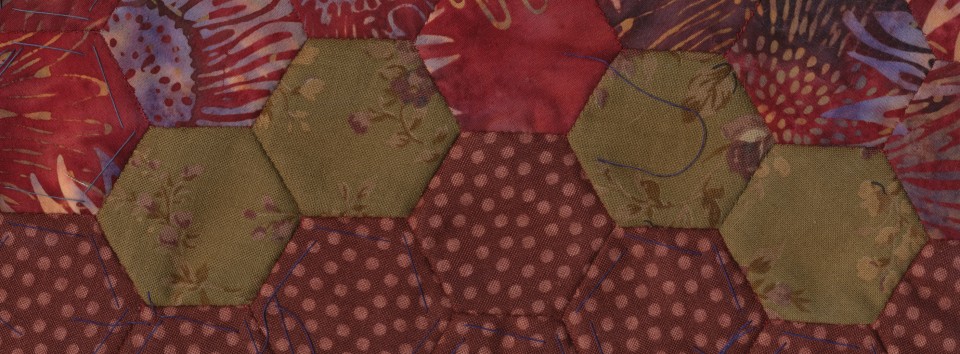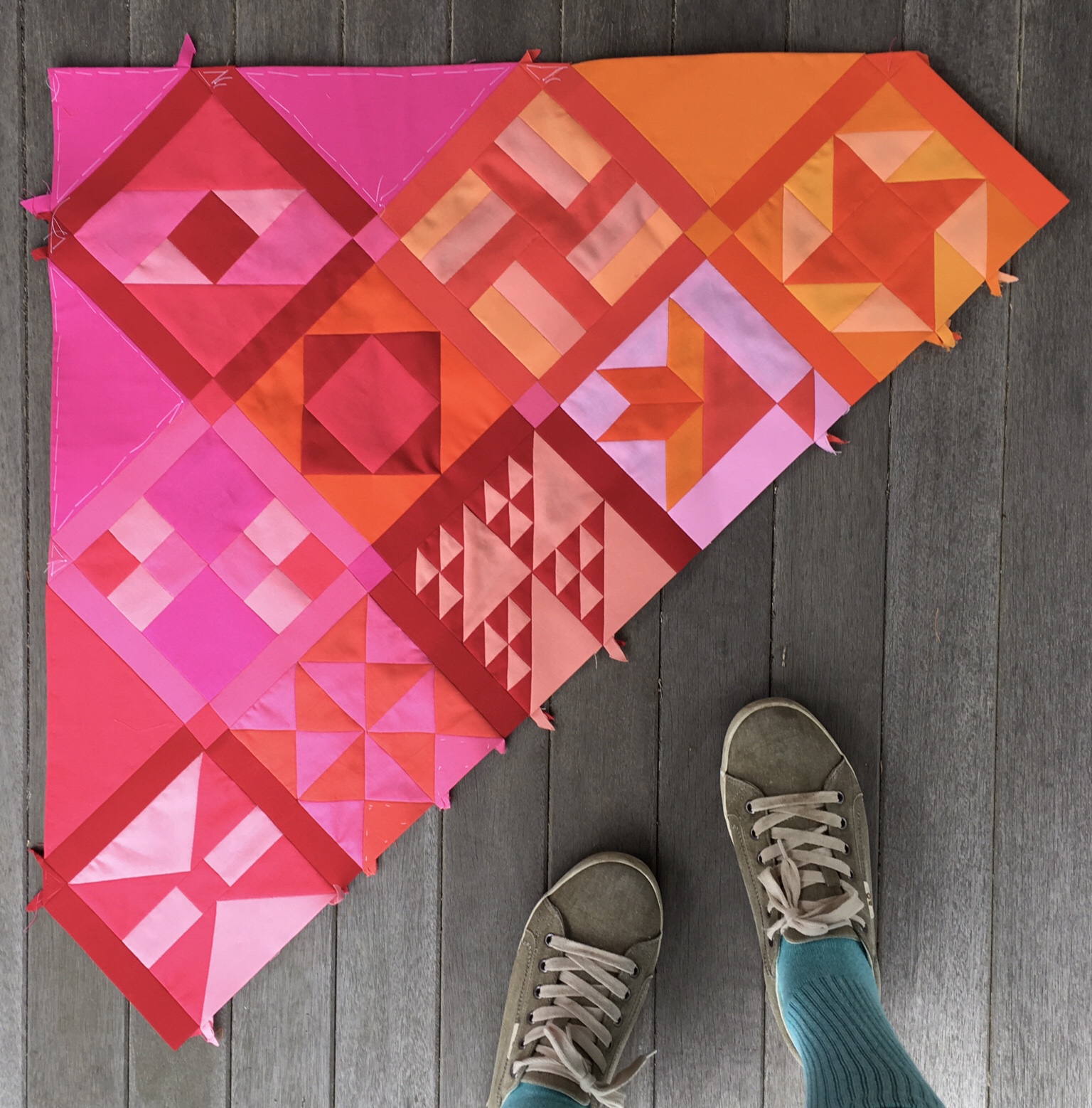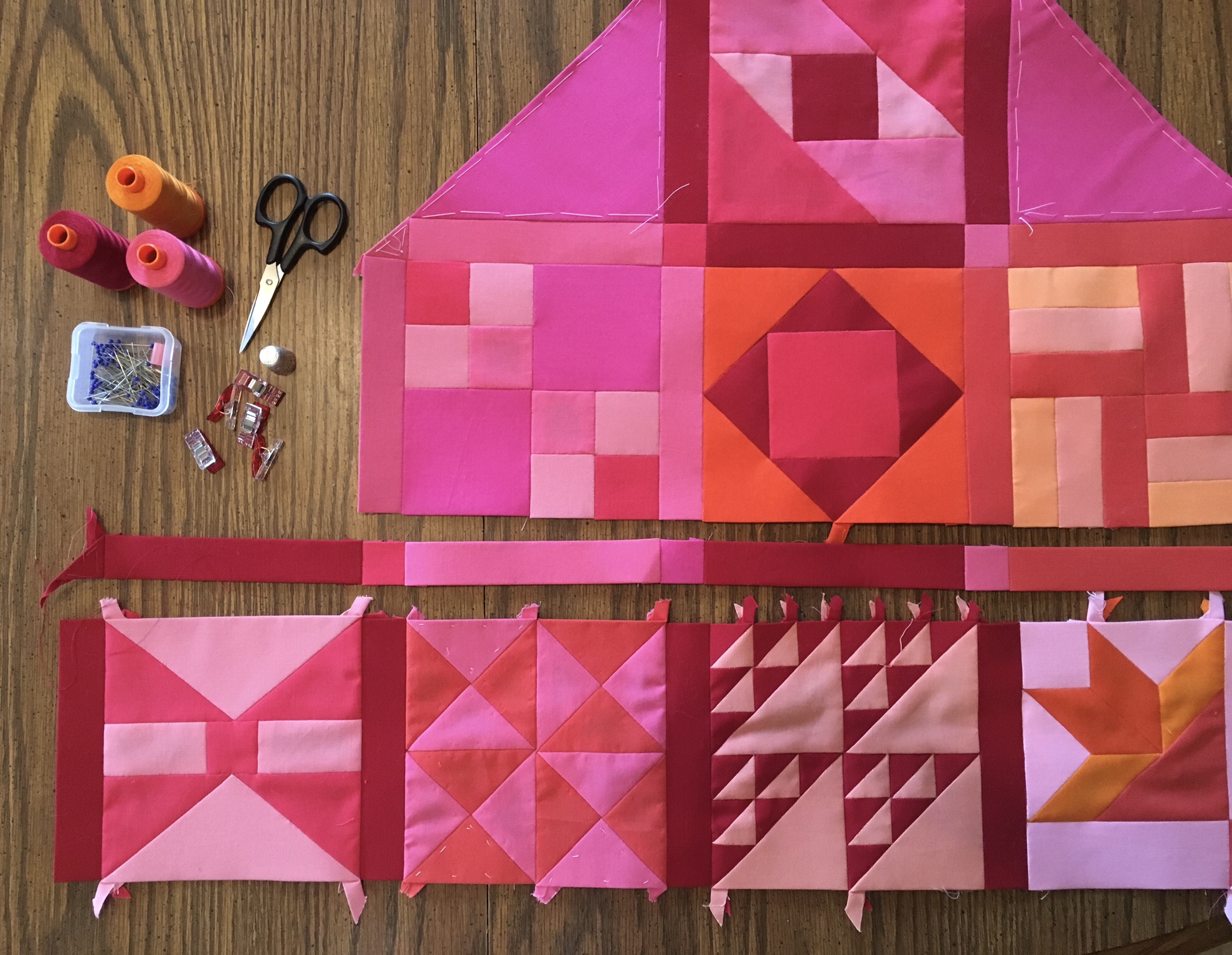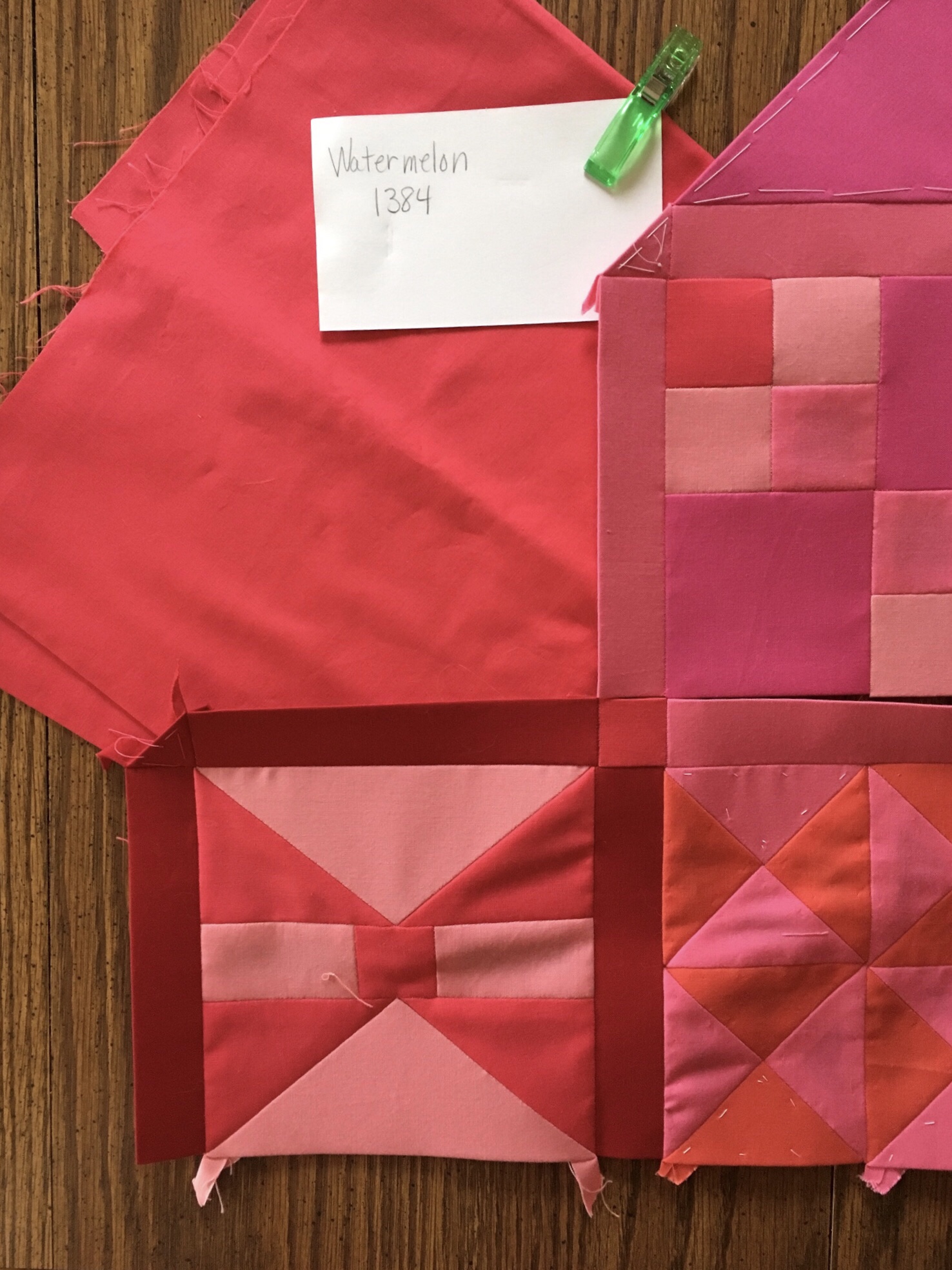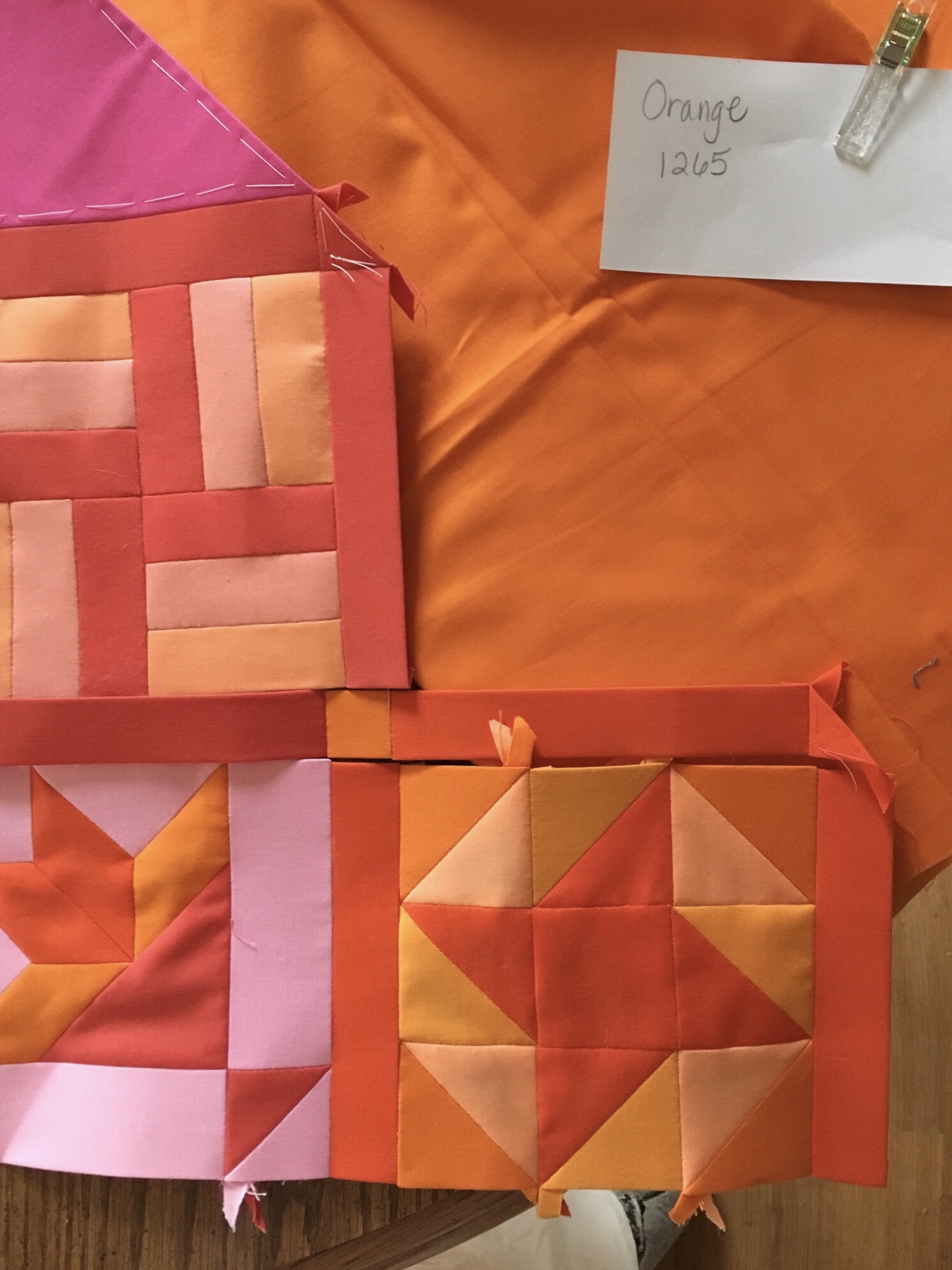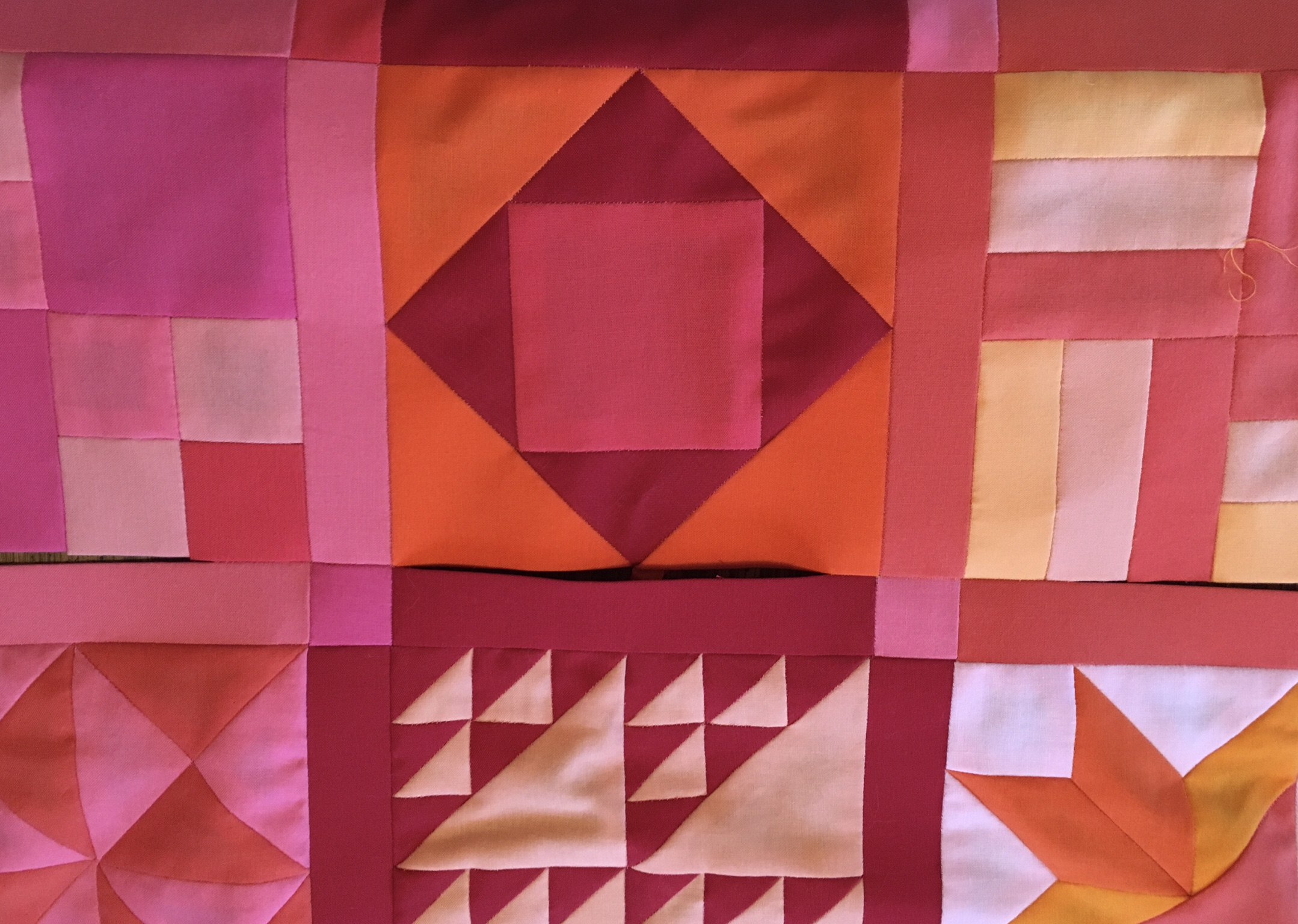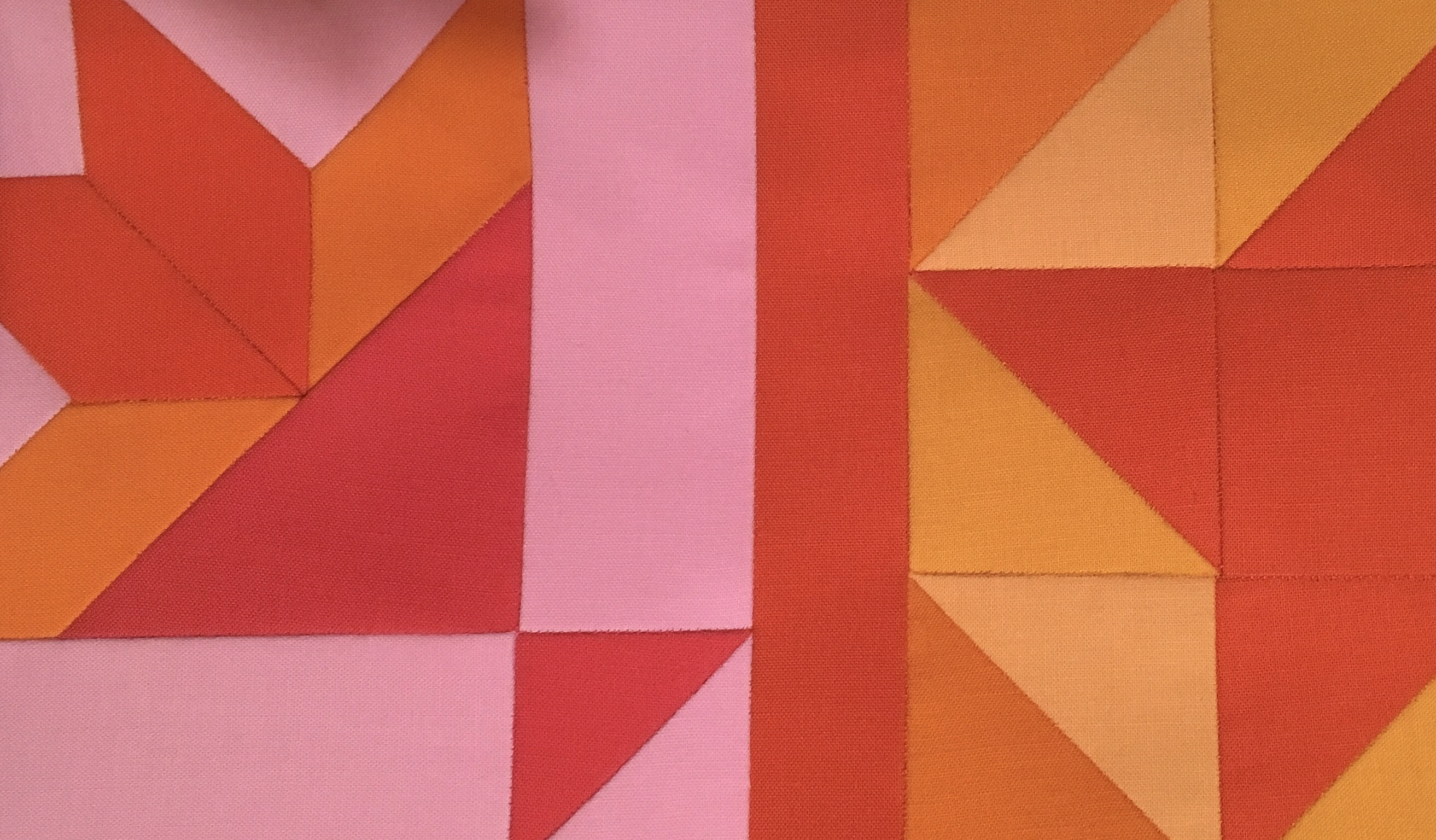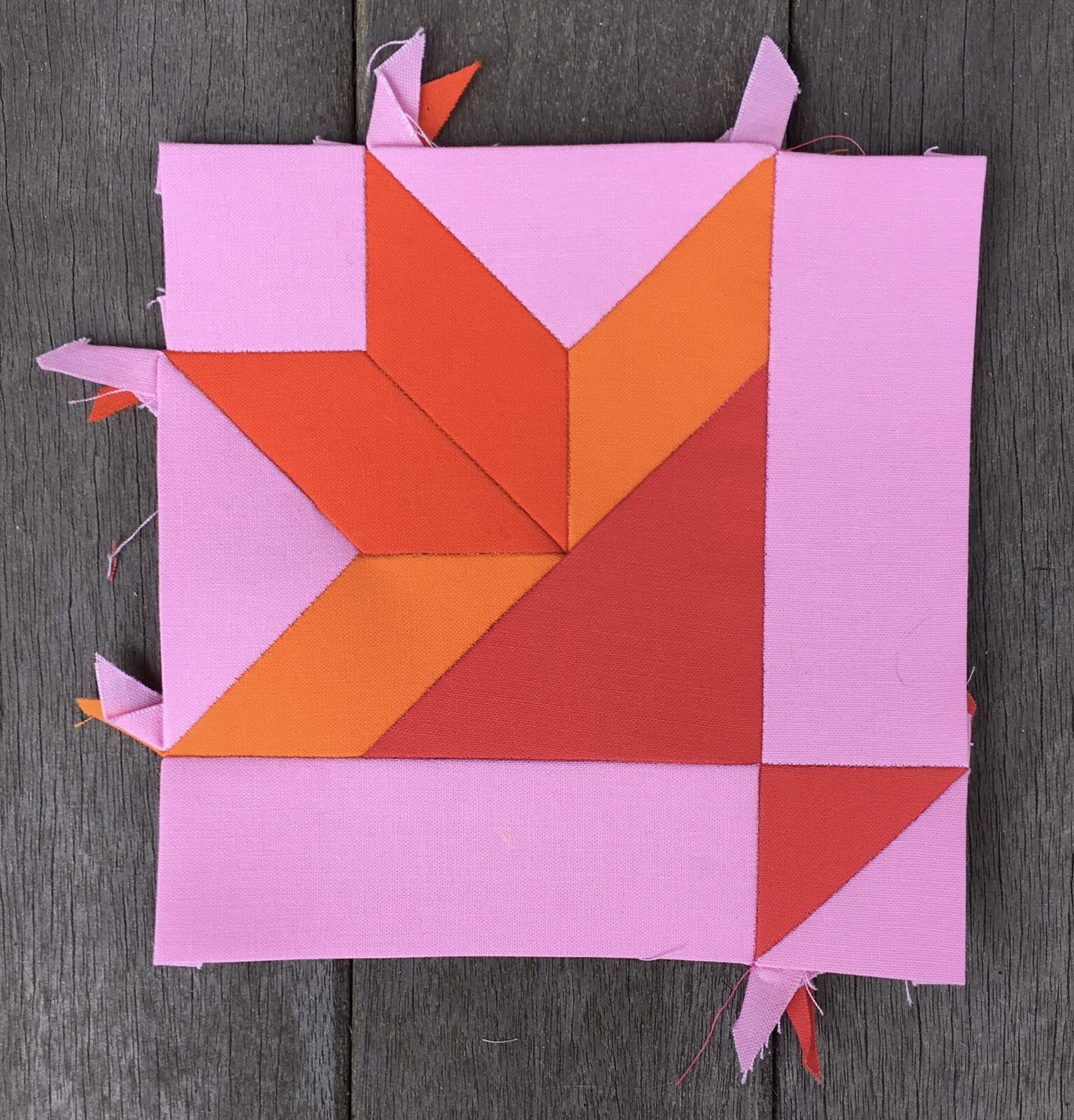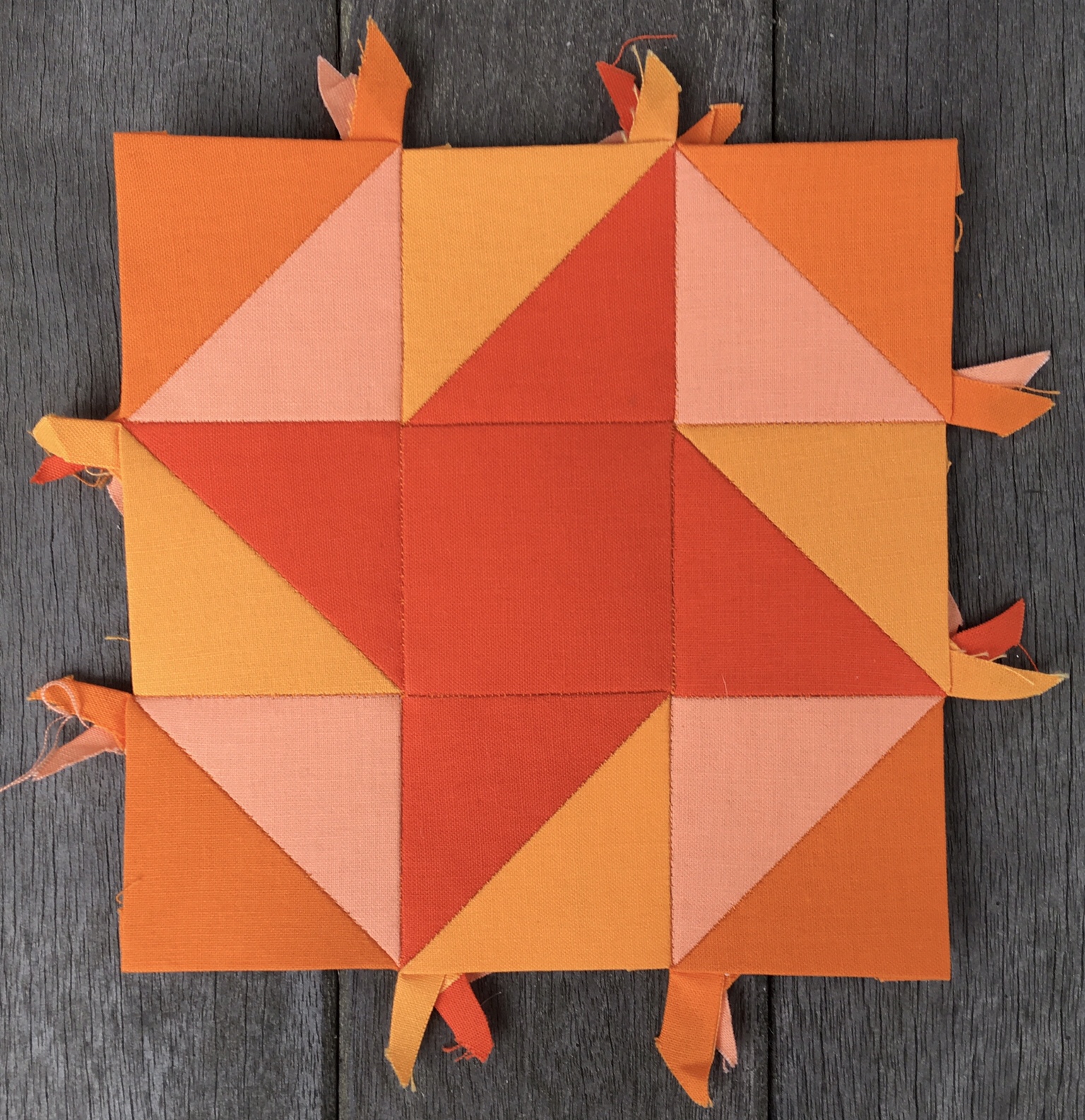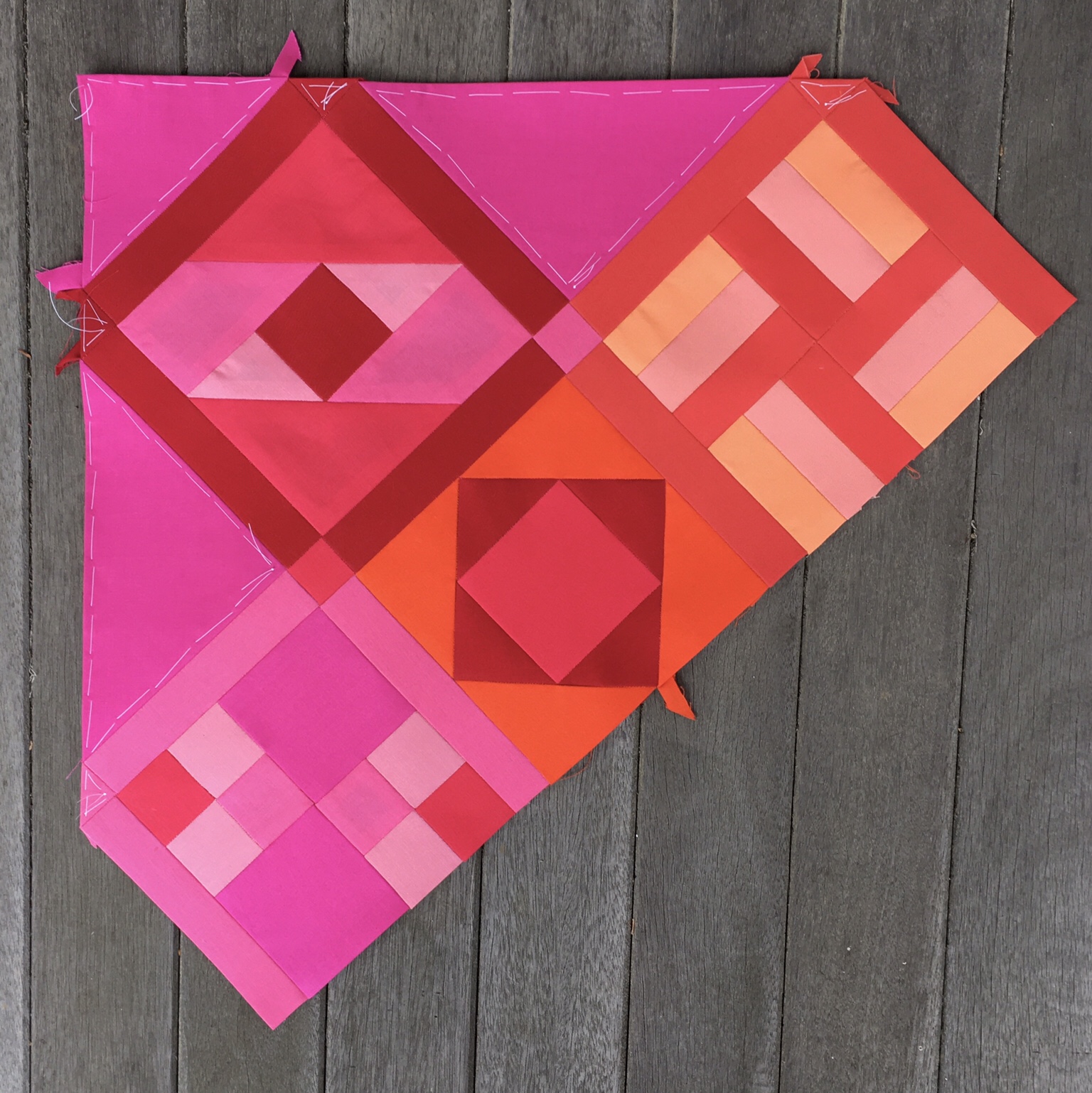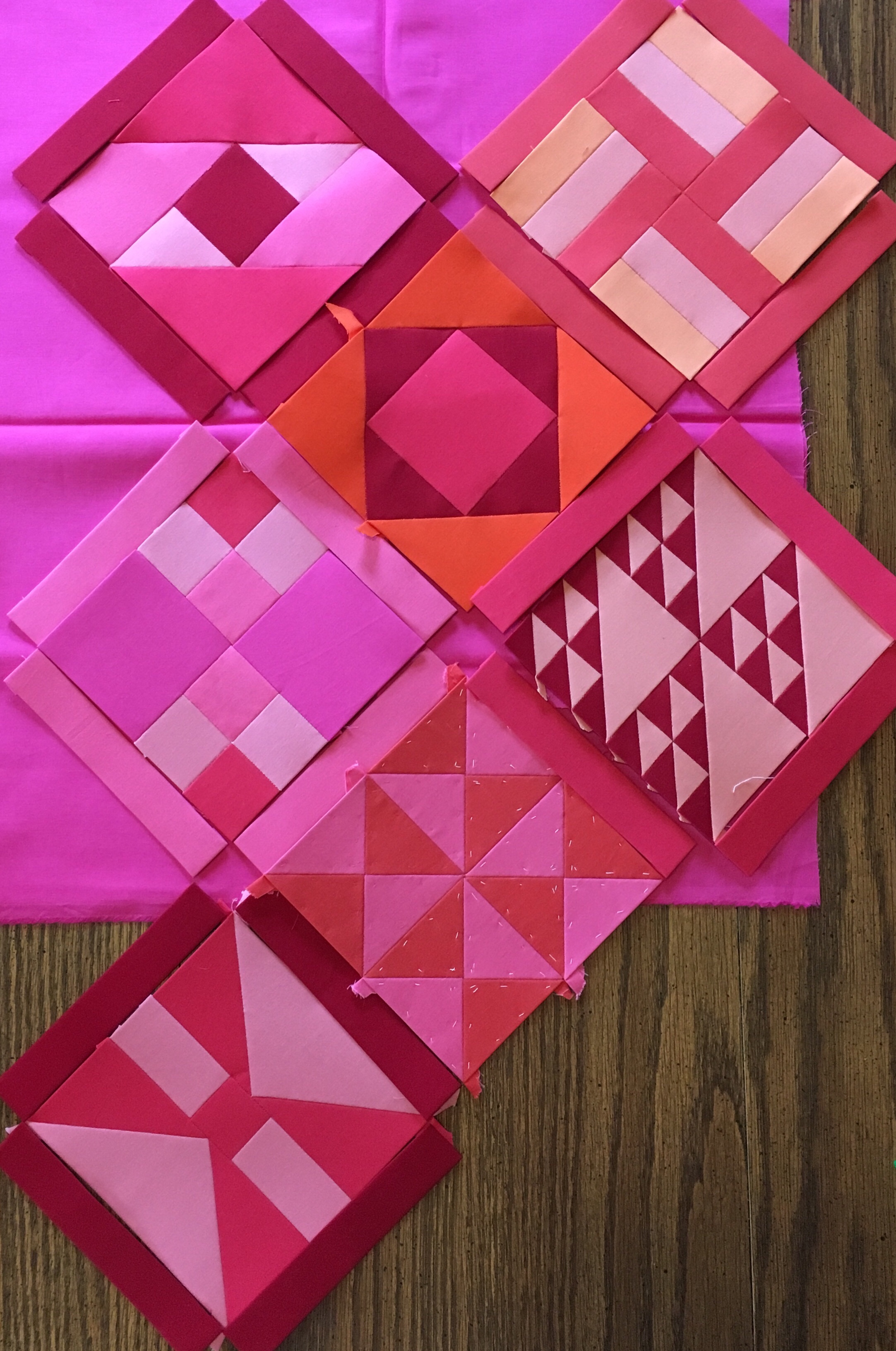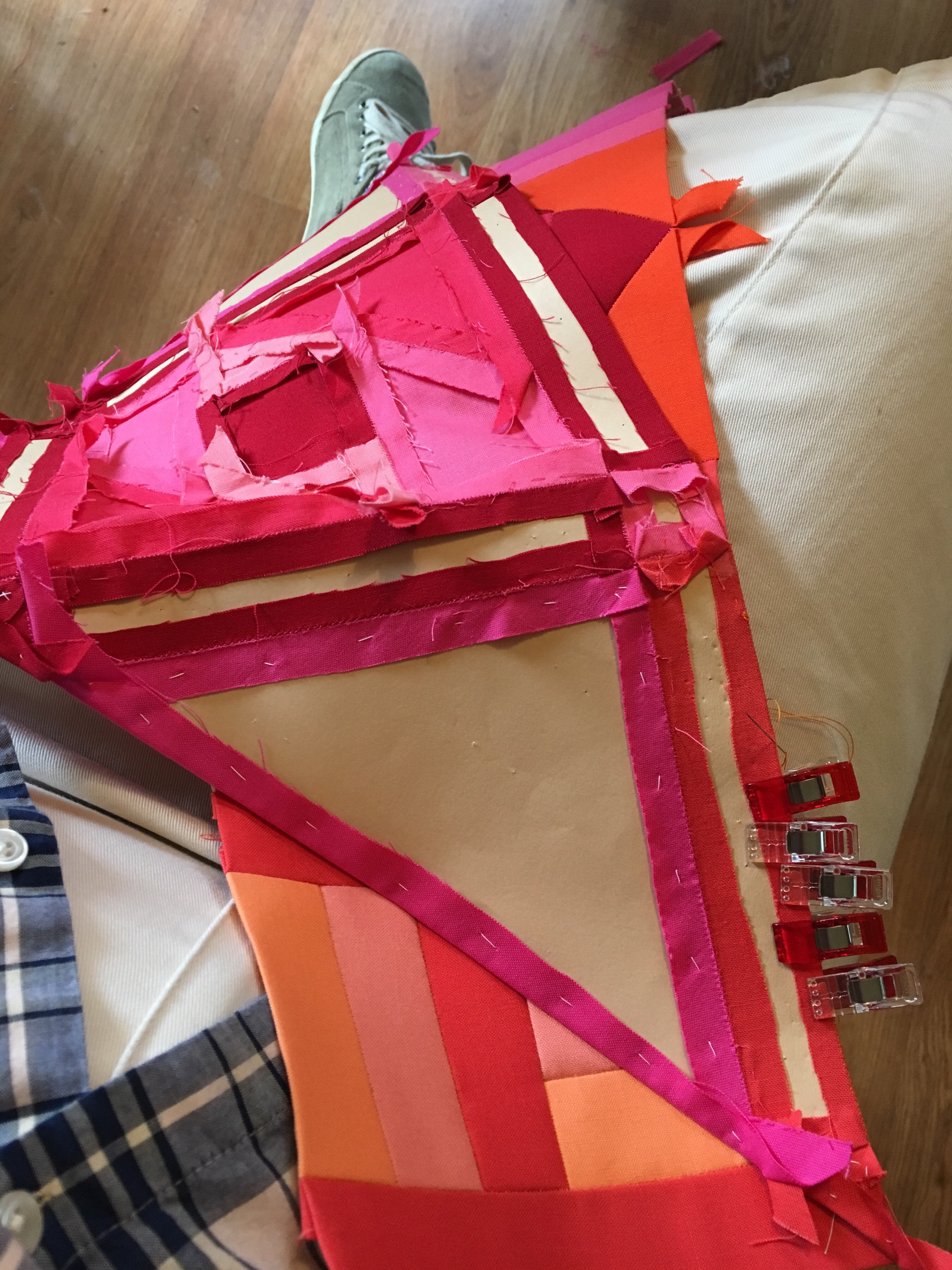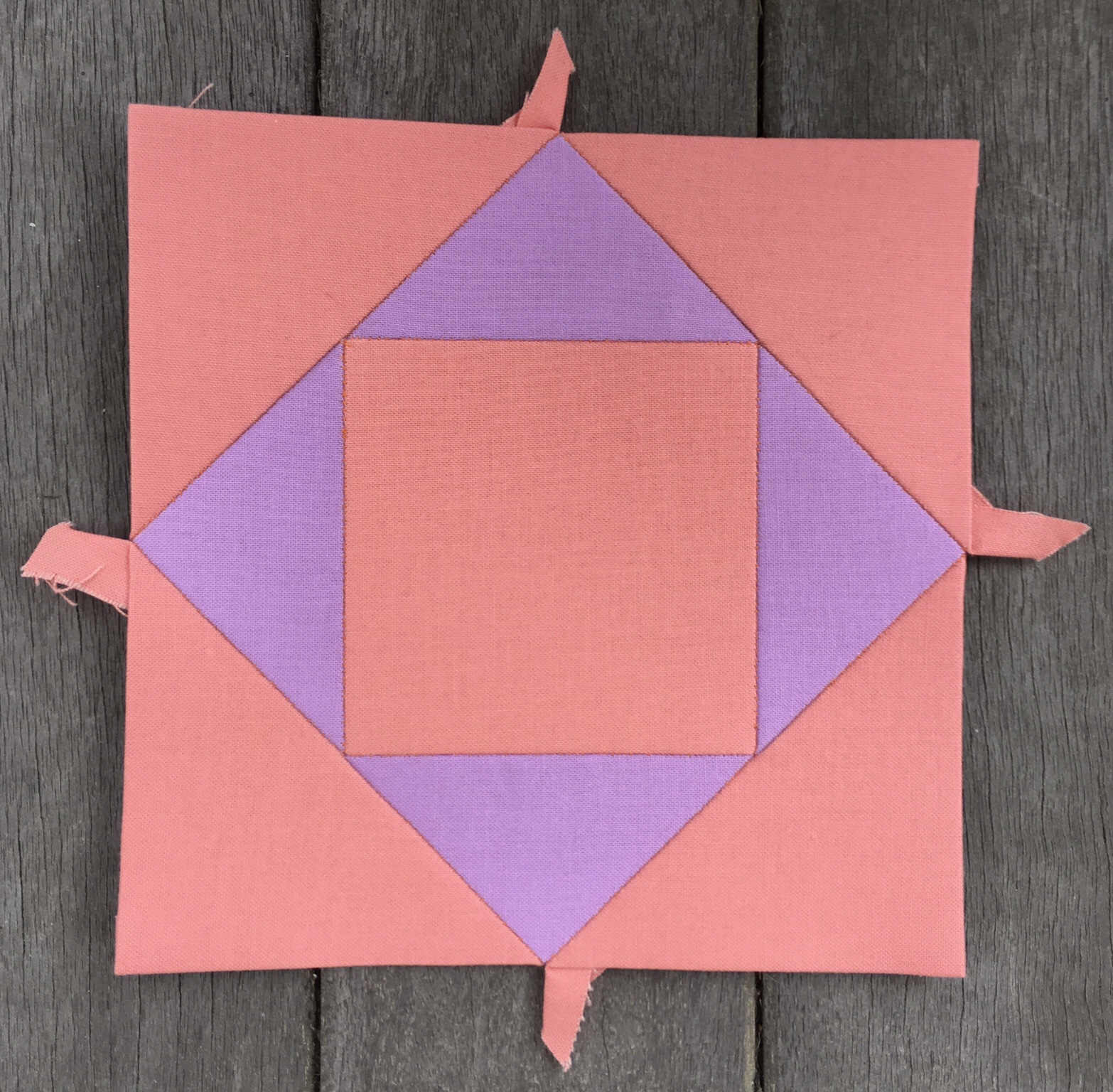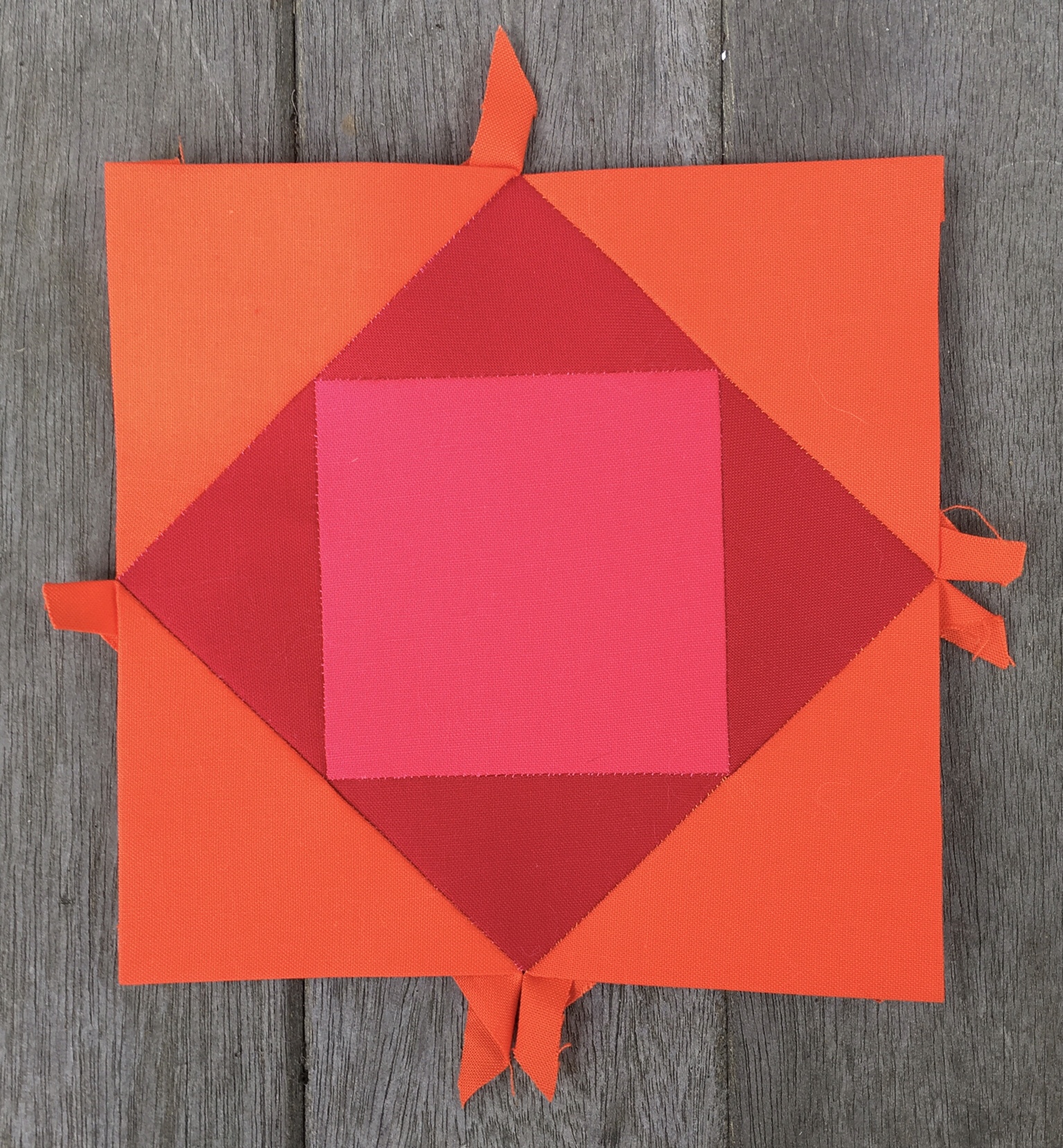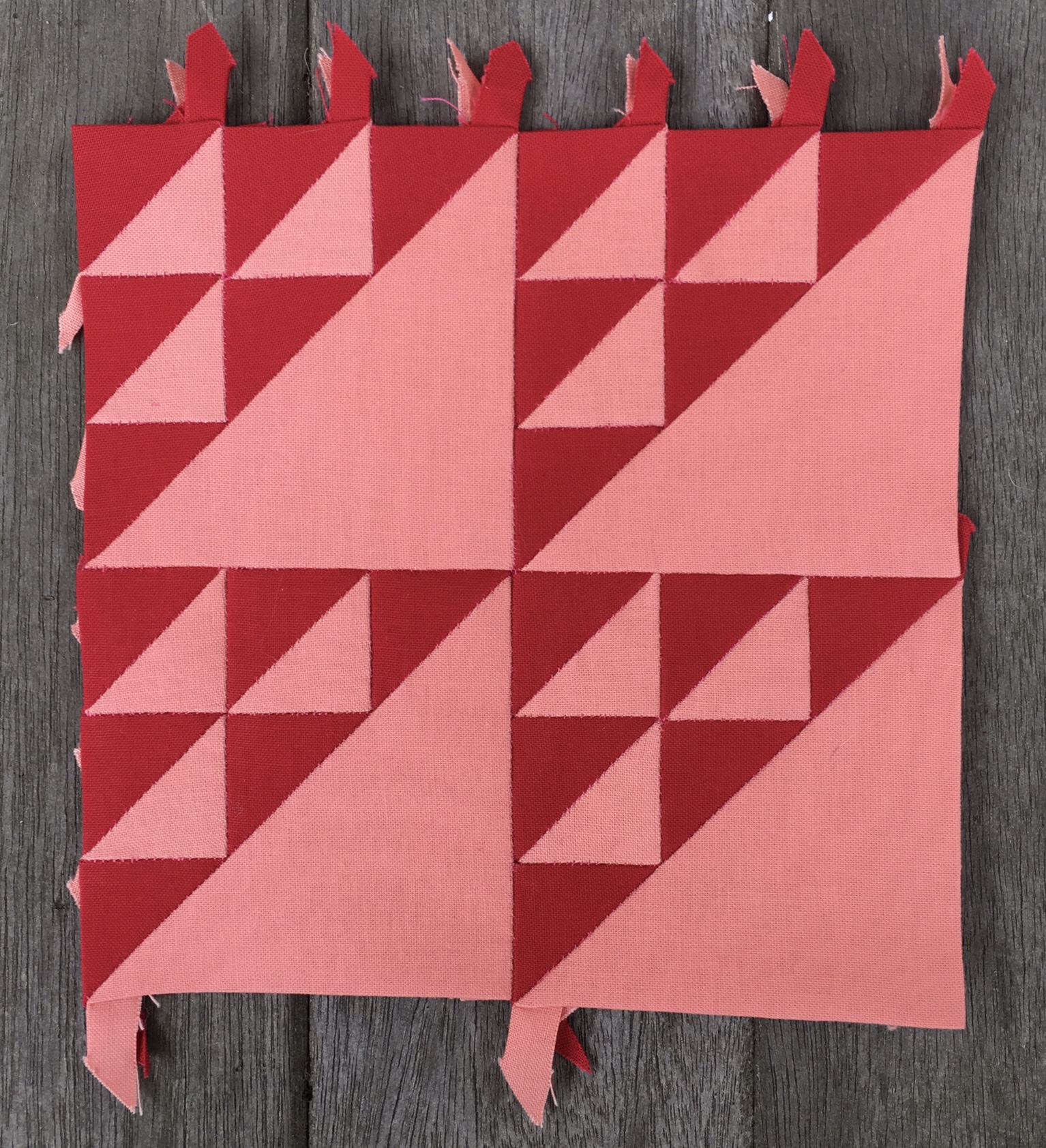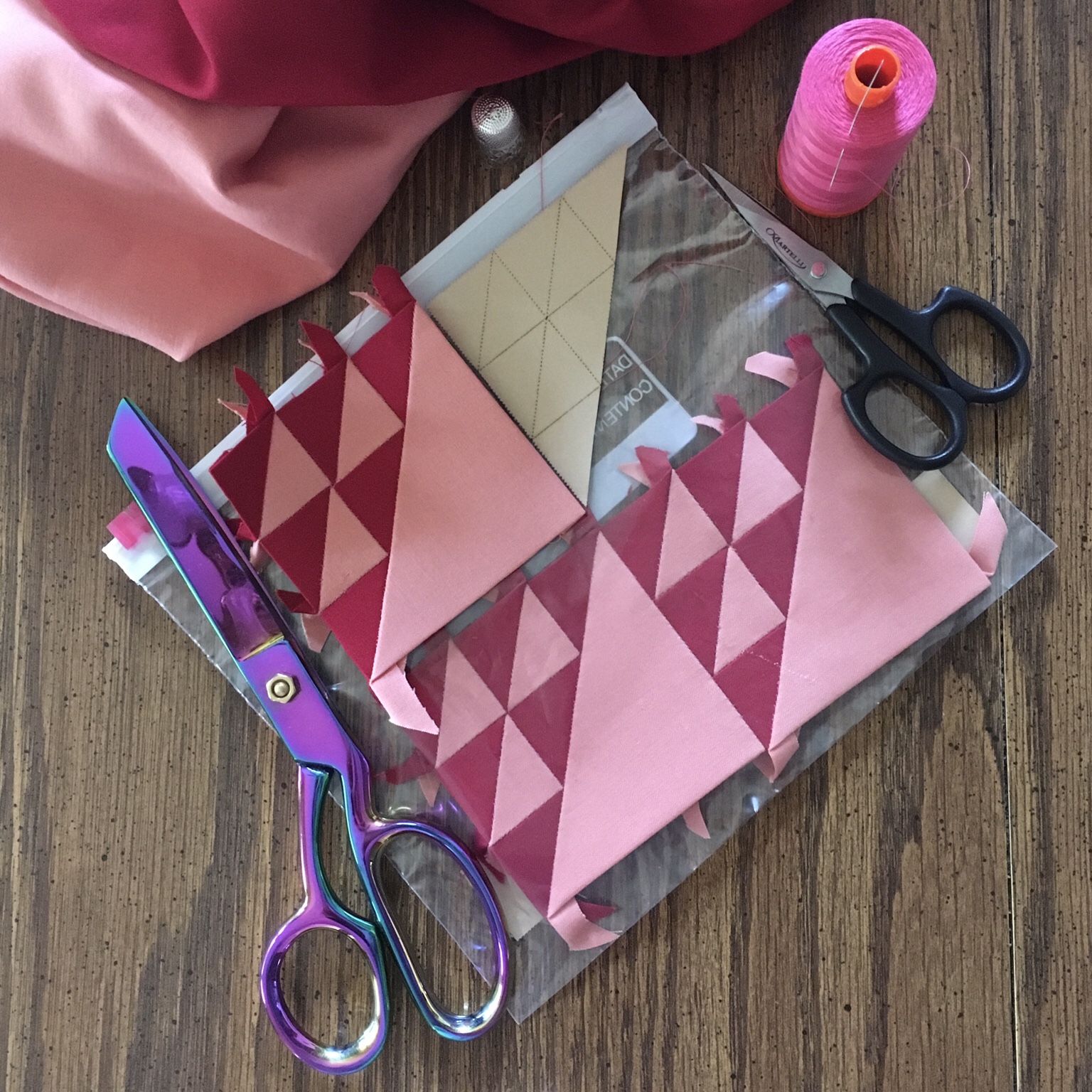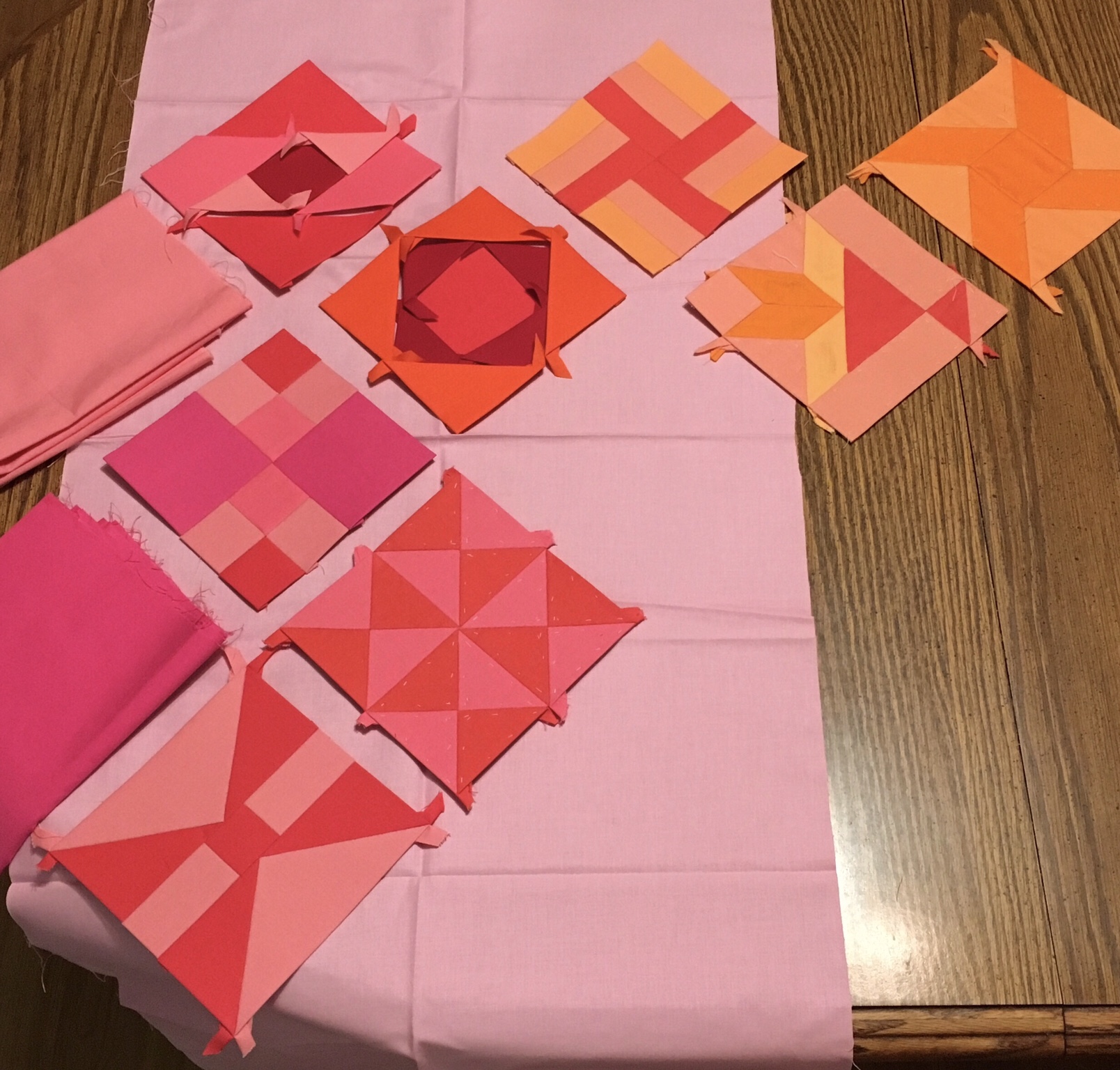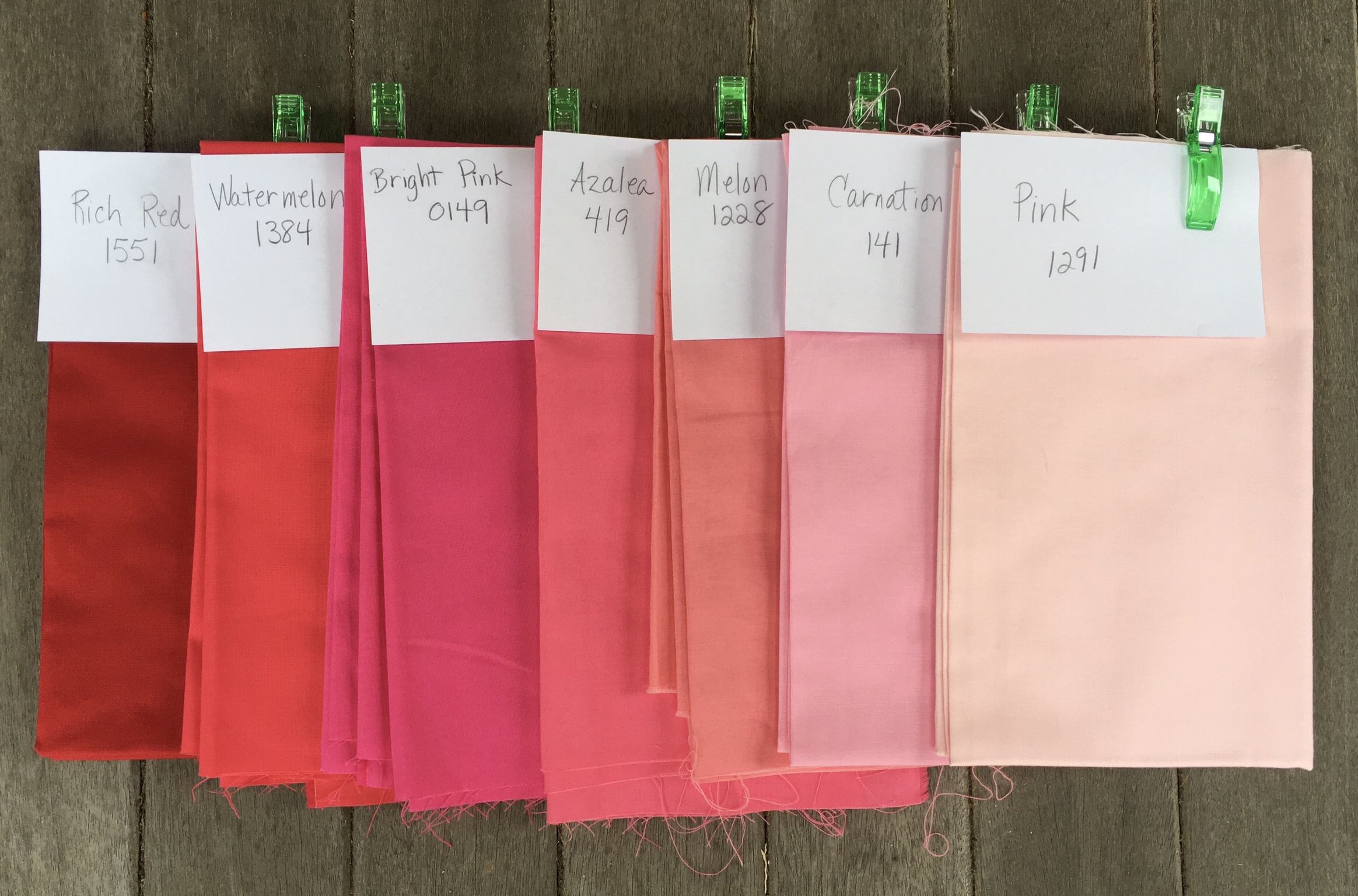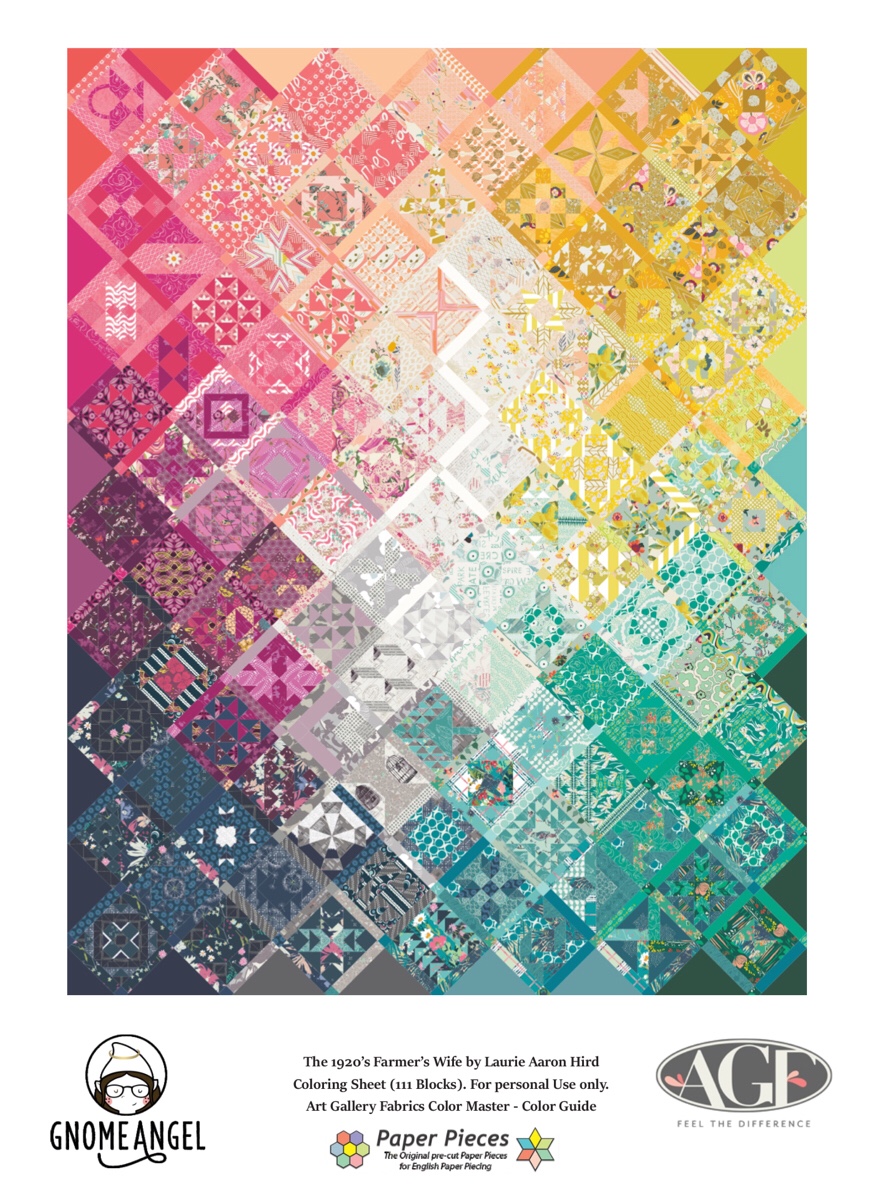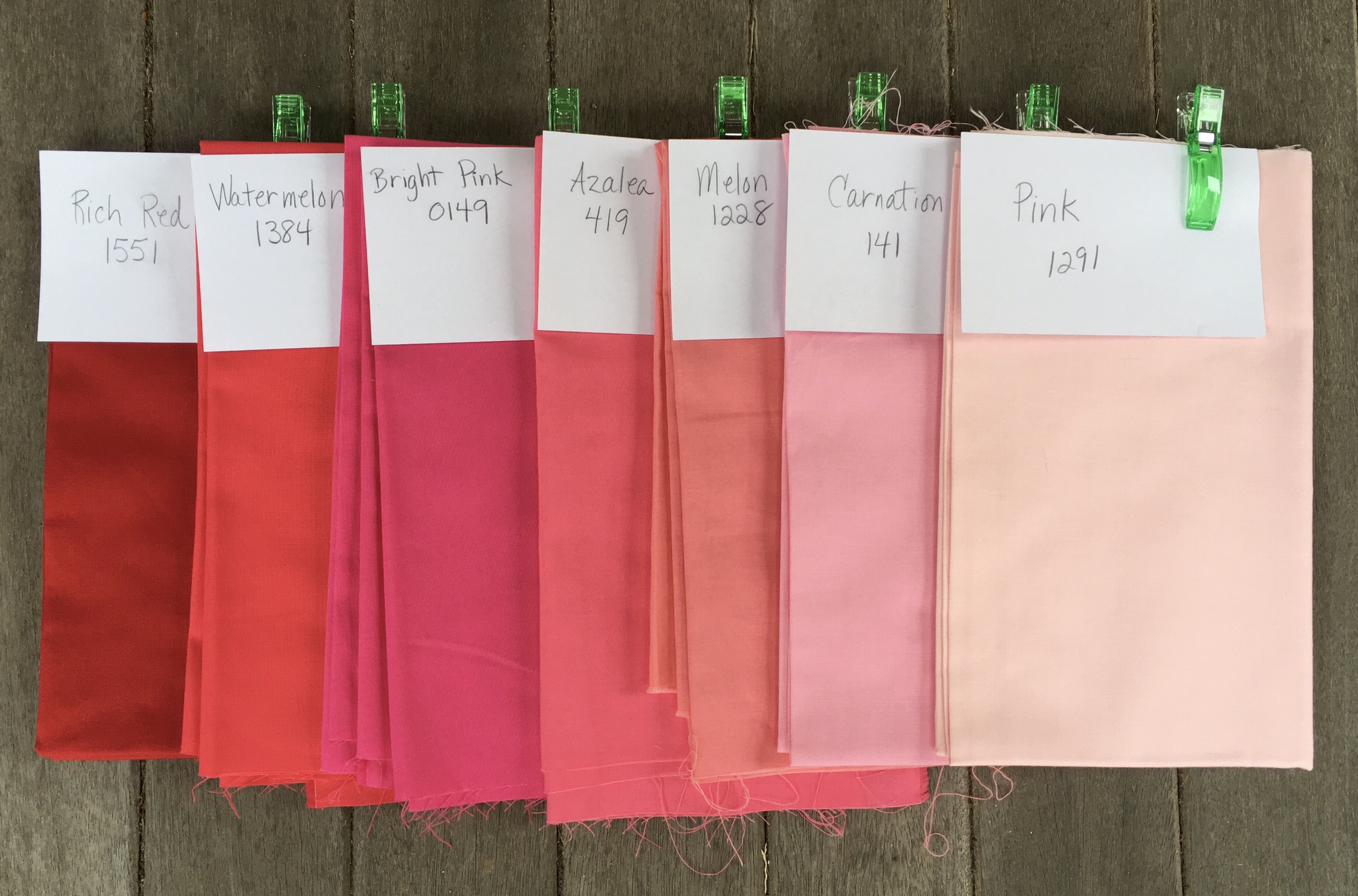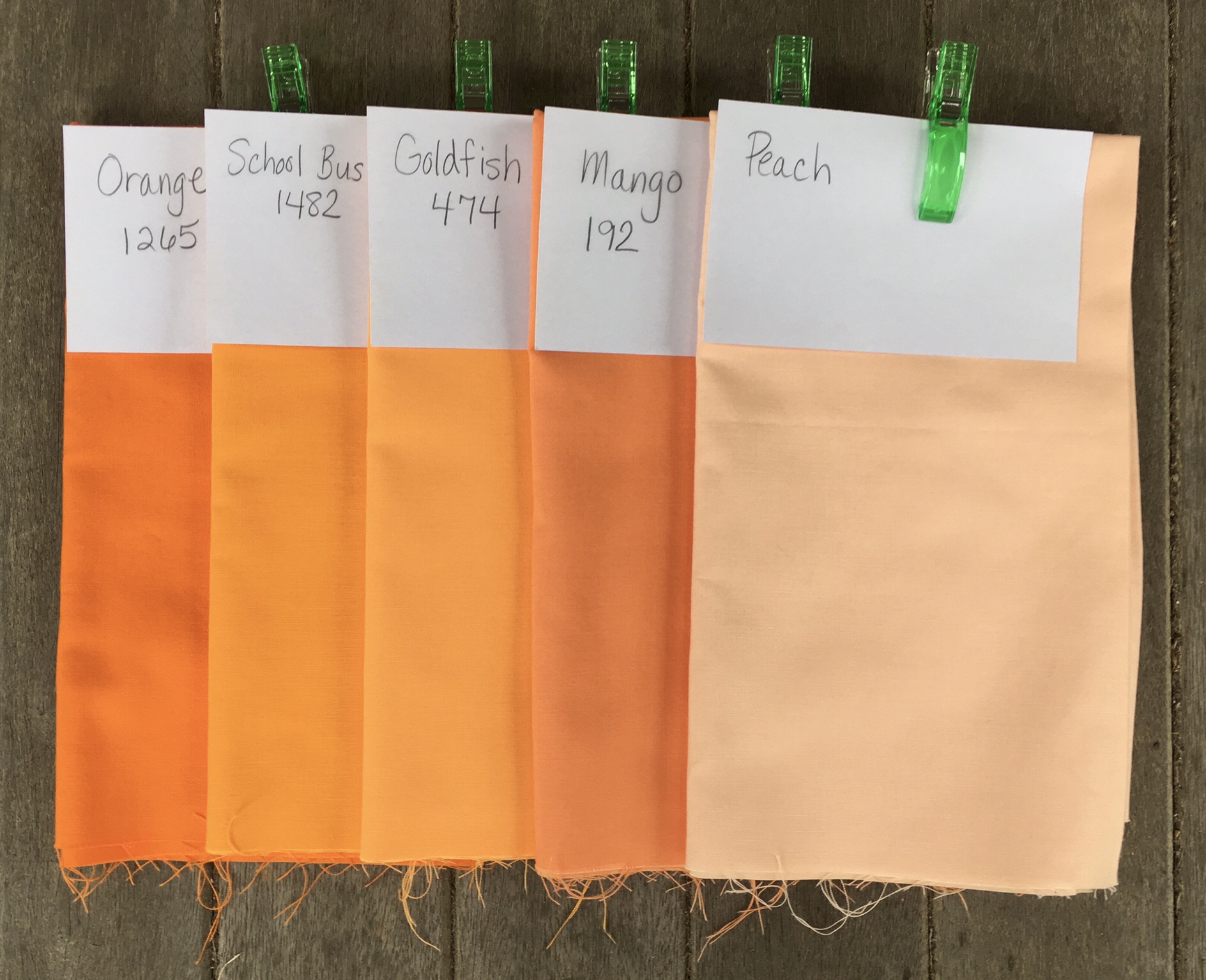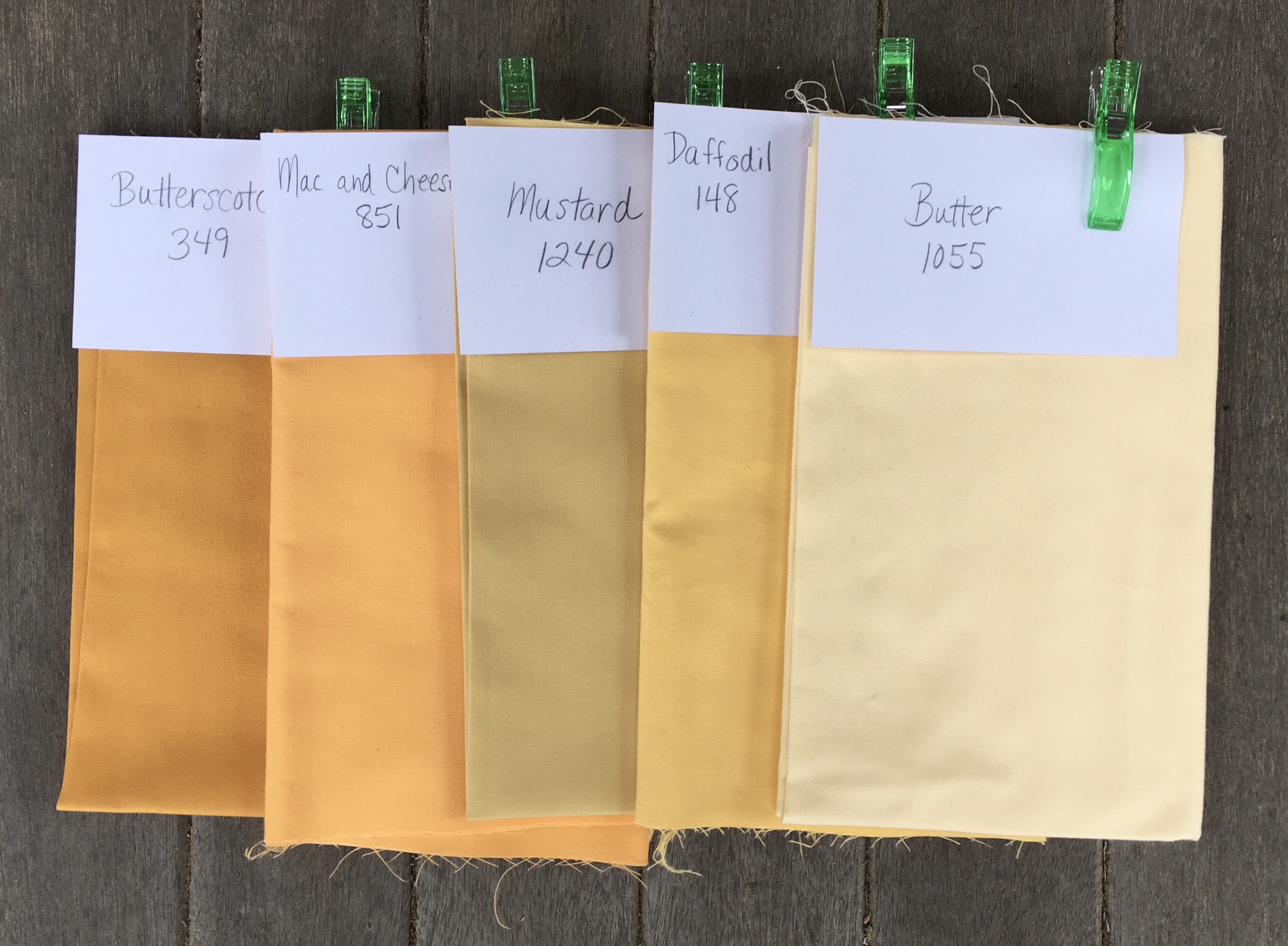After a month of working on the Farmer’s Wife Quilt I have decided to rethink my color wash concept. Initially I chose my solids to correspond with the color wash diagram provided by Paper Pieces. Even then I thought a color wheel concept might be better for me, and now I believe that to be true.
I’ve decided that the divisions of the Paper Pieces diagram are too artificial for me because they are based on the fabrics from a collection. I decided to redraw my color wash map using the color wheel as my starting point. Having already completed the upper left corner I needed to put red in the upper left of my map. Having used Tangerine in the #3 block position I needed to draw my color areas wide with significant overlap. I believe that this turned out to be a good thing.
Here is my new color wash map.
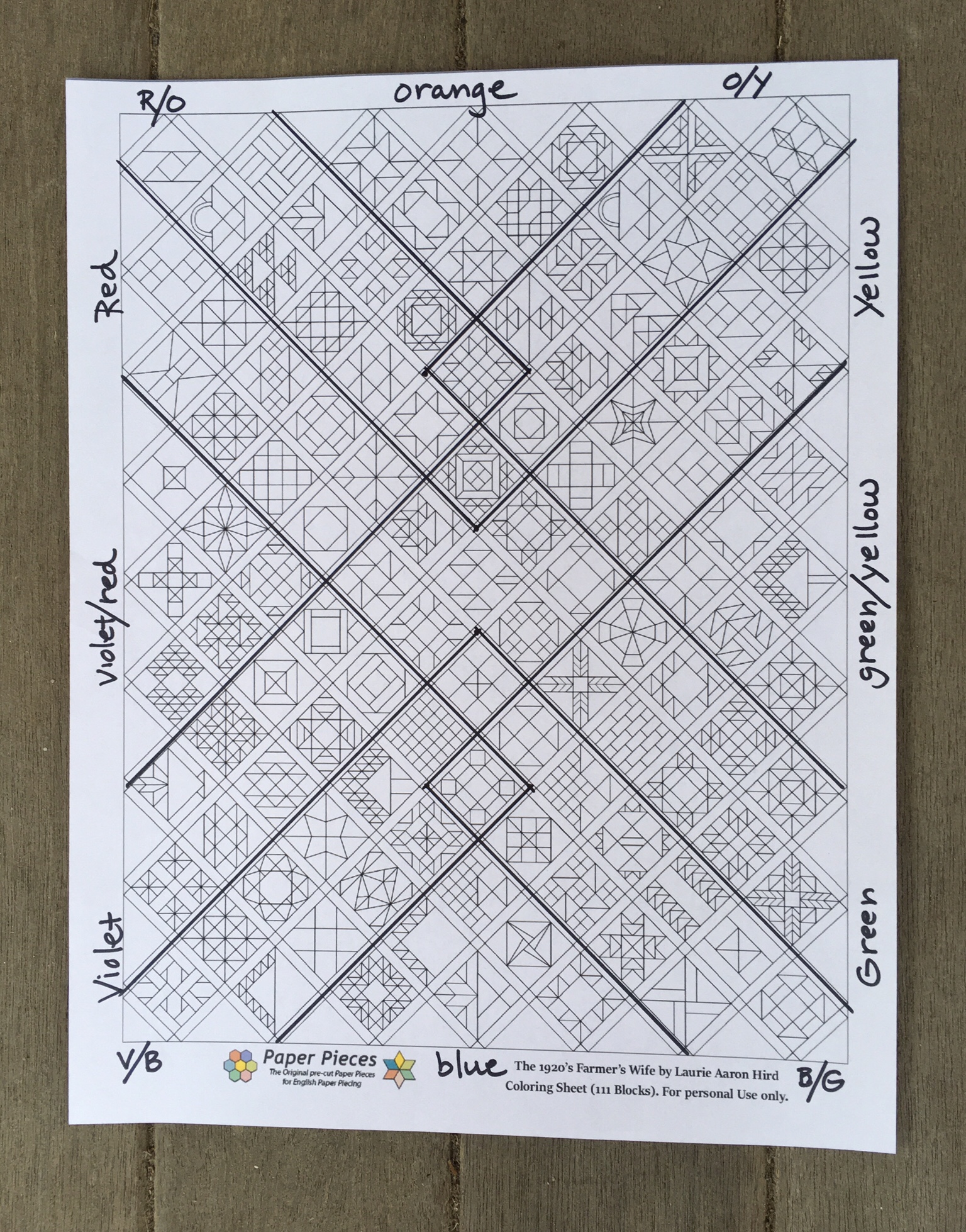
The image above shows both the major color areas and the areas of overlap labeled along the edge of the diagram.
A few images will help to illustrate the meaning of the diagram.
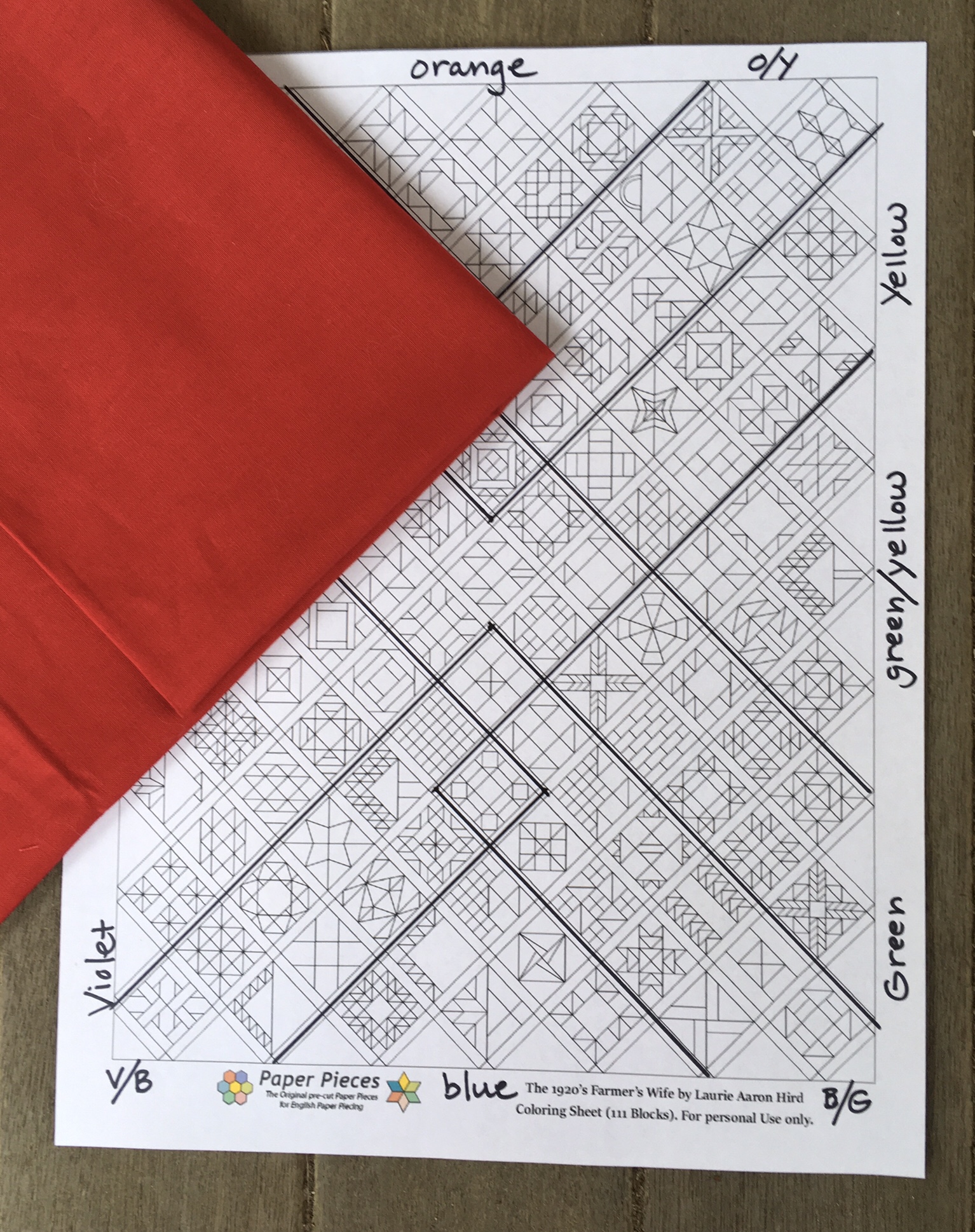
The red area, represented here by Rich Red, extends slightly into the right and descends 2/3 of the way down the left side.
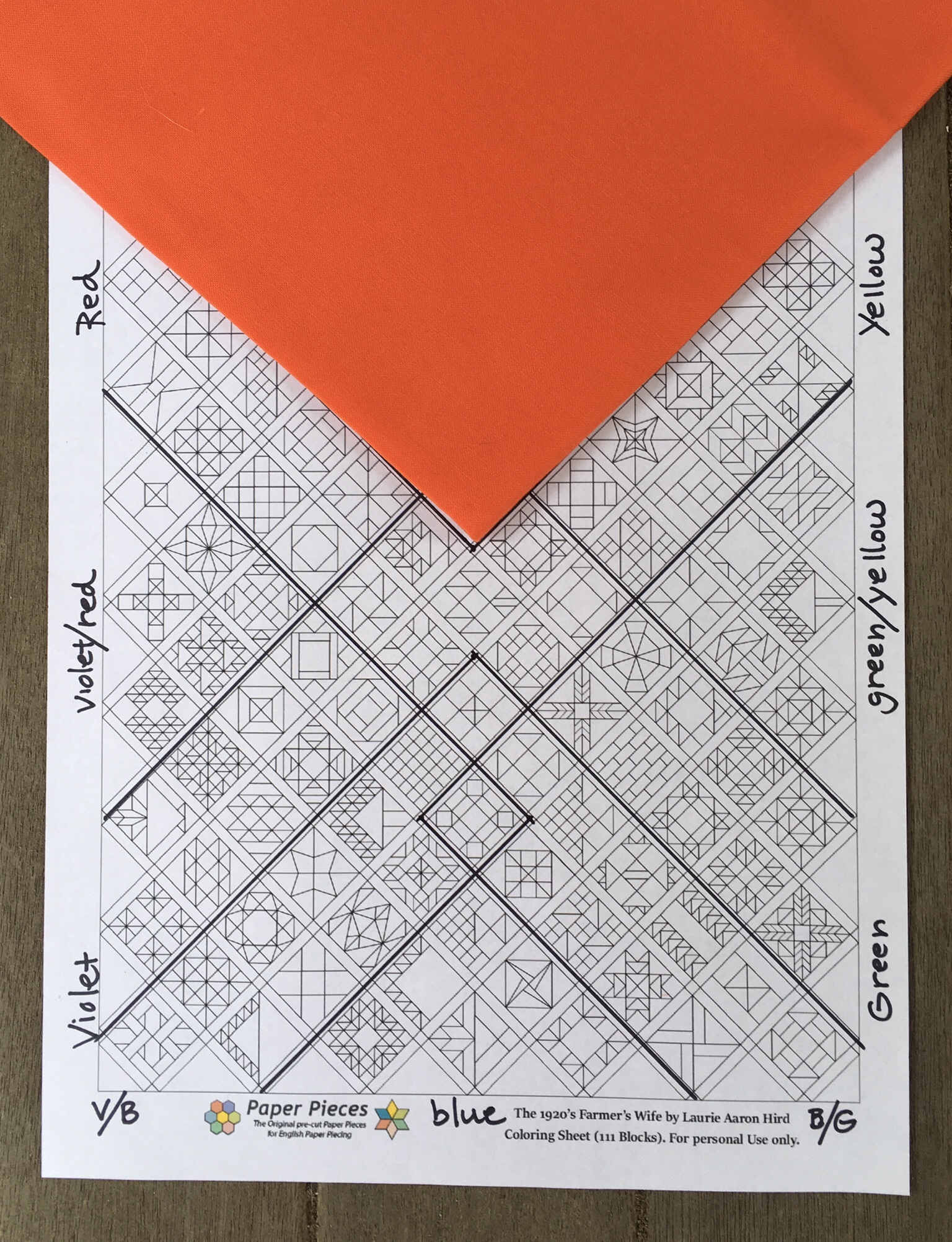
The Orange area, represented here by Tangerine, encompasses the entire width of the upper side and extends to nearly the center of the diagram.

The yellow area, reprinted here by Daffodil, covers the same amount of area as red, but begins in the upper right of the diagram.
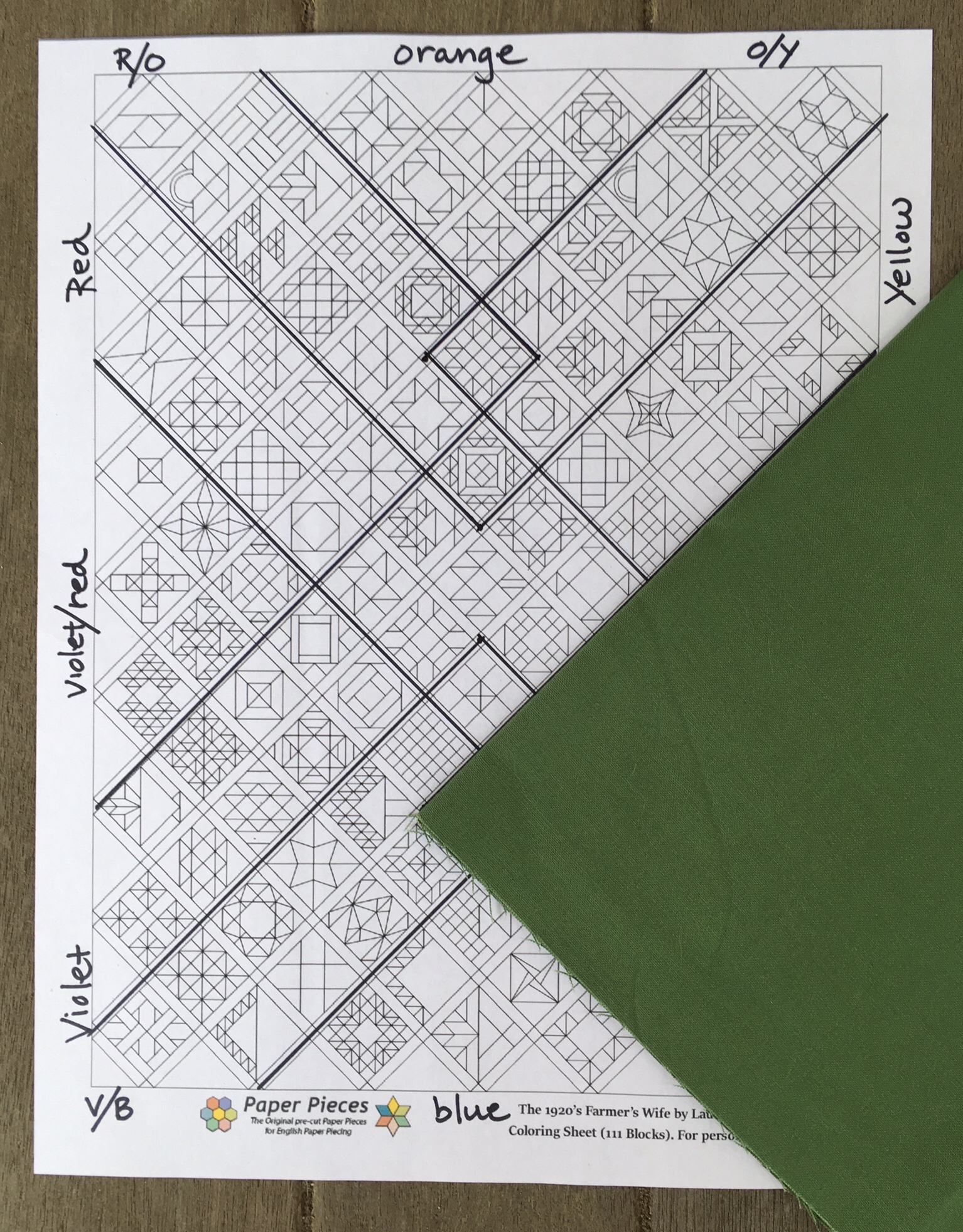
The green area, represented by Palm, covers the same amount of area as red, but begins in the lower right of the diagram.
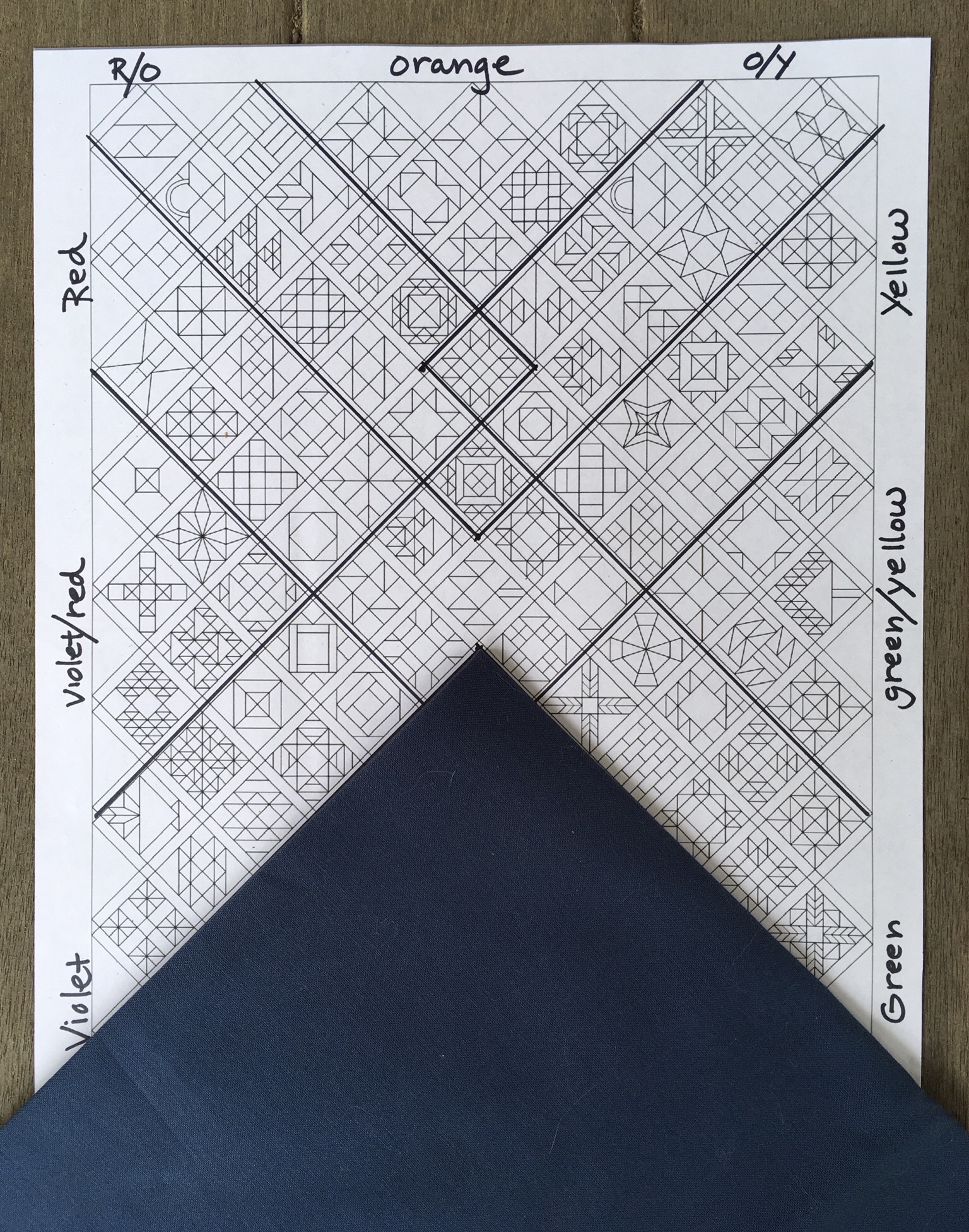
The blue area, represented by Windsor, covers the same amount of area as orange, but begins at the bottom of the diagram.

The violet area, represented by Heliotrope, covers the same amount of area as red, but begins in the lower left of the diagram.

If you are on your toes you may have noticed that there is an area in the middle of the diagram where no colors have staked out territory.
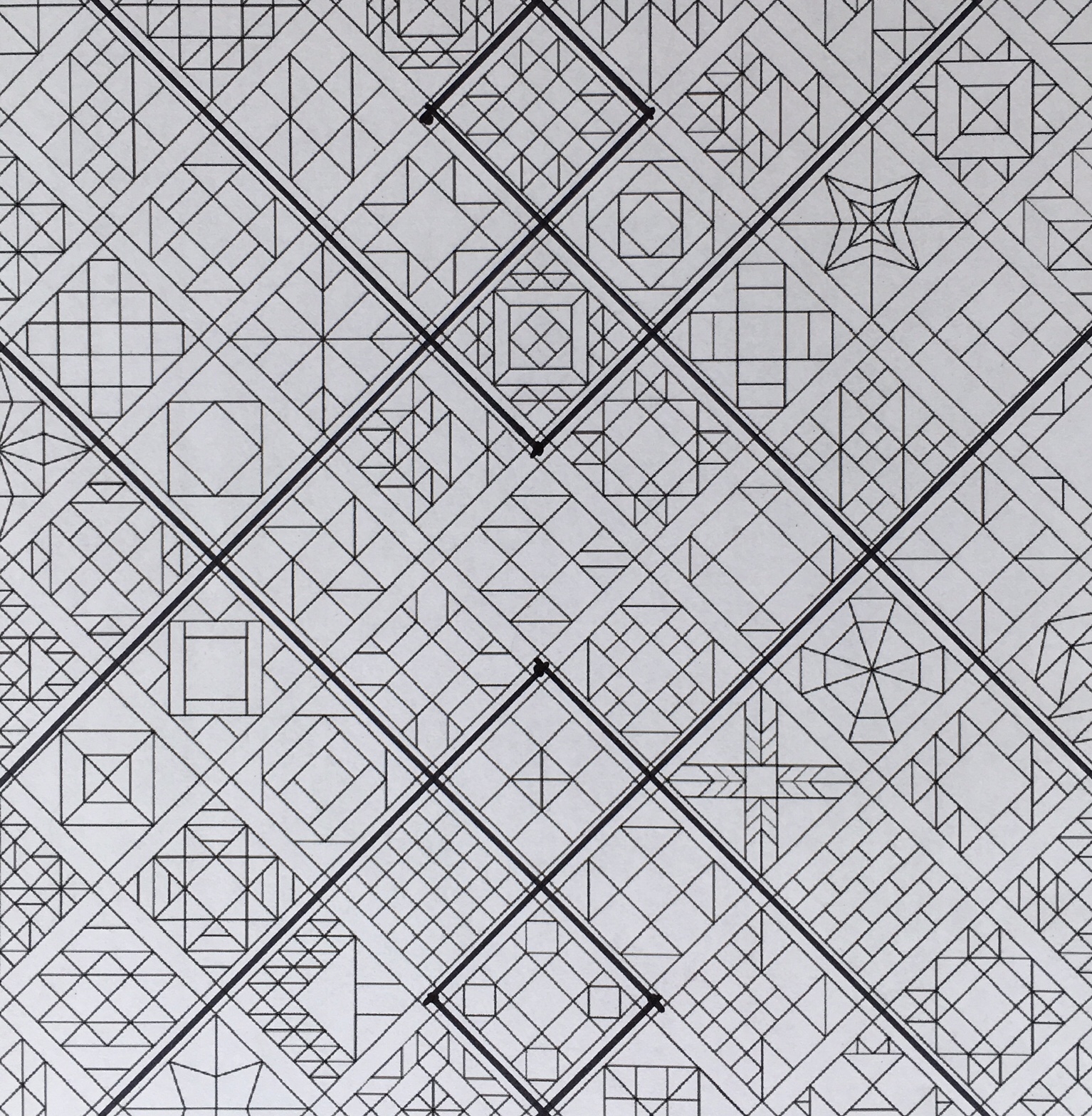
Plans for this area are not etched in stone yet. I like to be a little spontaneous. Well, as spontaneous as one can be with a craft as slow moving as English Paper Piecing. Suffice it to say, for the moment, that this central area may become a mini color wheel area with soft pastels and grays coming into play. I’m just not sure how far to extend the grays or the pastels. As my construction gets closer to this area I will firm up those decisions.
I want to mention that just because a block is in an area of overlap that does not mean that it must include all colors of overlap. It only means that it MAY include all colors of overlap.
Ordinarily I may not have bothered to blog about this, but I’ve obtained a few new subscribers recently, and I feel an obligation to go into more detail than usual.
Another thing to mention is that my initial color choices were toward the mid range of values. Fewer darks and lights were chosen. When I put in my second order of fabrics I purchased Rich Red, Carnation, and Pink to expand my value choices for the red area. I proceeded to use a good deal of the Rich Red especially for sashing, and I imagine that I will want to do something similar by adding darker values to the other color areas. However this emphasis upon dark values and high contrast is something I believe that I want to keep within three blocks of the edge of the quilt. I see myself moving toward less contrast in the center of the quilt.
My next task in gaining control of color is going to be to sort the fabrics I have obtained so far into my new color categories. I’m down to six categories now from twelve.
